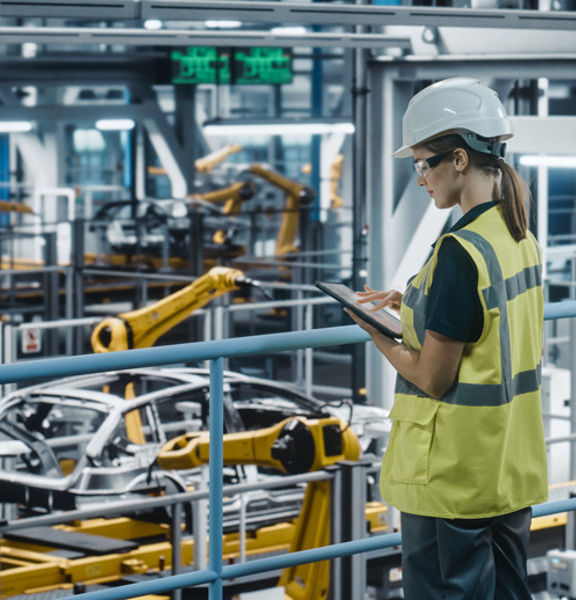Become a member
Take advantage of exclusive member benefits, world class events, networking and specialist support








 Become a member
Become a member 

What are the key automation and materials handling trends impacting warehouse operations in this sector? Find out more here.
What are the key automation and materials handling trends impacting warehouse operations in this sector?

Manufacturers want to create a more efficient labour force by using automation for product picking and despatch activities. Most are looking at reducing costs in warehouse operations through automated solutions and repositioning existing labour into more added-value tasks. A common activity is a forklift (with driver) travelling across a warehouse to deliver a pallet, then returning unladen to pick up another. A trend today is assigning goods-in products to a pick station and having AMRs (automated mobile robots) undertake the extensive travel movements. This strategy means the forklift can stay in a more localised area, where it can work more efficiently. Worker safety also receives a boost, and there is less potential for the forklift to damage racking.

What makes the needs of manufacturing and hi-tech warehouses different to those in sectors such as retail?
Retail has different seasonal peaks and troughs in comparison to manufacturing. As a result, automation solutions for retail warehouses have to offer sufficient capability and capacity to handle peak volumes, potentially making them more expensive. Fundamentally, however, the requirements are largely the same, with everything currently geared to enhancing efficiency and reducing labour costs, which is why automated vertical storage systems are proving increasingly popular. This is especially true of the EffiMat® vertical lift module (VLM), which brings five component boxes into position for picking simultaneously, unlike conventional systems that retrieve a single box at a time.
What role are AMRs playing in the warehouse for manufacturing and hi-tech companies?

The major use for AMRs in a manufacturing warehouse is the movement of pallets, either goods-in or goods-out, or they find application moving non-conveyable items (products not suitable for the warehouse’s conveyors). AMRs such as the popular MiR series are very flexible in what they can move, and are collaborative in that they can function safely in the human space. The uptake of AMRs in the warehouse arena is growing hugely at present. Looking into the not-so-distant future, we will see the development of AI (Artificial Intelligence) playing a much larger role in AMR technology. With AI the robots will be better able to understand their environment and will have the ability to make decisions whilst on the move. For example, determining not only when its path is blocked, but what is blocked by and if it can be navigated or if an alternative route would be best.
How will materials handling trends in these key markets change during 2021?

The trends for 2021 will focus on achieving even better picking efficiency. By using automated vertical storage systems to deliver higher component quantities simultaneously it is possible to pick kits more quickly without the need to travel around line after line of racking. Once picking is complete, an AMR can deliver the parts to a production line for assembly, or to the despatch area for packaging, further boosting efficiency. With it becoming increasingly difficult to find workers willing to take-up roles that traditionally carry a low-wage tariff – along with incremental increases in the minimum wage – the automation of logistics functions has never been more important. Automation also allows logistics companies to fix their project costs over the period of the contract. In contrast, projects based on human labour must factor-in pay fluctuations, with any future wage rises either swallowed by the employer or passed on to customers.
For more information contact RARUK Automation on 01462 670 044 or email us at automation@raruk.com